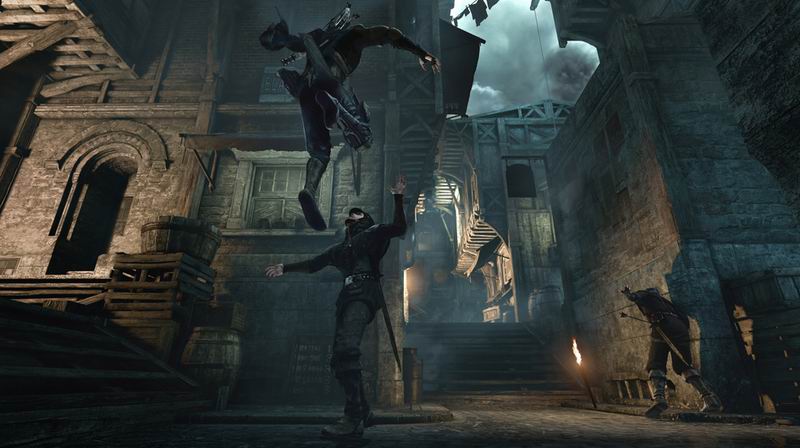Thief is the reboot of one of the oldest, and smartest of the stealth-action gaming series. Of course, as is customary in modern videogame design, the gameplay's been somewhat dumbed down. But it's not fatal here – leaving a stealthy and stylish successor that's a touch too repetitive.
The Thief trilogy, which ran from 1998 to 2004, was a hugely influential set of stealth-action games. Splinter Cell and Dishonored, for instance, both owe a huge debt to the series' light and shadow-based stealth gameplay. But the series was difficult to master and slow in pace – with players required to carefully observe guard movements, plotting moves from the shadows, and also expected to explore heavily.
 The reboot streamlines things for a more modern audience. But cleverly lets old lags ditch the ever-present prompts and help for a more purist approach to stealth.
The reboot streamlines things for a more modern audience. But cleverly lets old lags ditch the ever-present prompts and help for a more purist approach to stealth.
Here, as Garrett the master thief, you prowl your chiaroscuro home city where the guttering candles and the flickering torches of patrolling guards barely touch the inky darkness lurking in the nooks and crannies. This part-Victorian "steampunk", part Medieval castle setting, is the star of the game.
Except coming out of a coma, after a prelude that sees you disastrously interrupting an occult ritual, you find the city sick with the aptly-named "Gloom", your assistant missing/presumed dead, and a price on your head. Finding out what's going on means gathering up your lockpicks and bow and sneaking past a lot of guards, hiding in shadows and stealing stuff.
 So far, so atmospherically excellent. And the stealth gameplay remains fairly freeform – you have the option of taking guards with force, but will be quickly outnumbered. So, instead the game encourages careful exploration and timing. This, however, is undermined in several ways that clearly are aimed at modernising the series.
So far, so atmospherically excellent. And the stealth gameplay remains fairly freeform – you have the option of taking guards with force, but will be quickly outnumbered. So, instead the game encourages careful exploration and timing. This, however, is undermined in several ways that clearly are aimed at modernising the series.
An ever-present on-screen direction marker that tells you where you're headed next is the most obvious addition. But far worse is the ability to "Focus" at a button press – highlighting nearby secrets, enemies and traps. This ability is available nearly non-stop in the game, and at certain times you're even forced to use it. But it's best ignored for those who want to genuinely live by their wits (the direction marker can also be turned off too).
There are also annoyingly gung-ho Call Of Duty-esque action sequences you're funnelled into too for a bit of explosive drama. But they're infrequent. What ultimately sees Thief marked down is its sheer unimaginative repetitiveness.
So much of the game involves looting yet another trinket from yet another cupboard, or hiding in yet a cupboard to dodge yet another guard. There seems far too little imagination applied to mission structure or environment or dialogue, or even difficulty shifts.
The final result is Thief looks lovely and is at times beautifully atmospheric, but after a while feels a tad too repetitive and uninvolving to truly grip. Someone stole the thrills.
- Thief is out now for PC, PS3, PS4, Xbox One and Xbox 360. Developed by Eidos Montreal and published by Square Enix
- Read other gaming reviews on The Arts Desk
- Simon Munk on twitter















Add comment